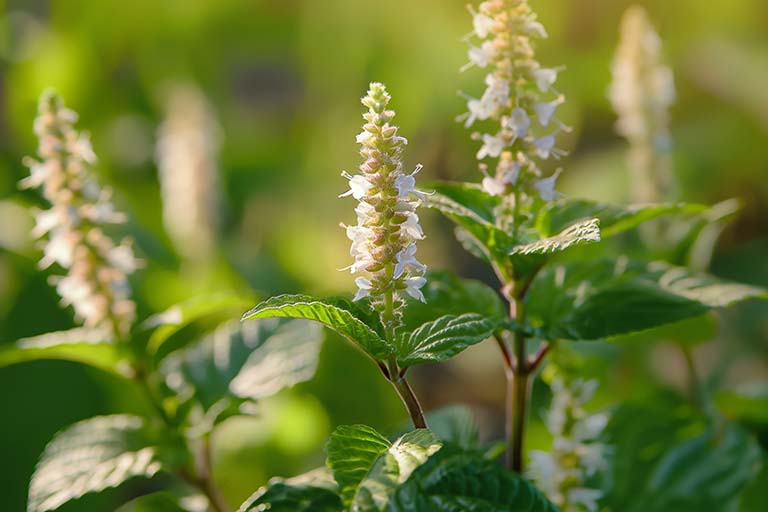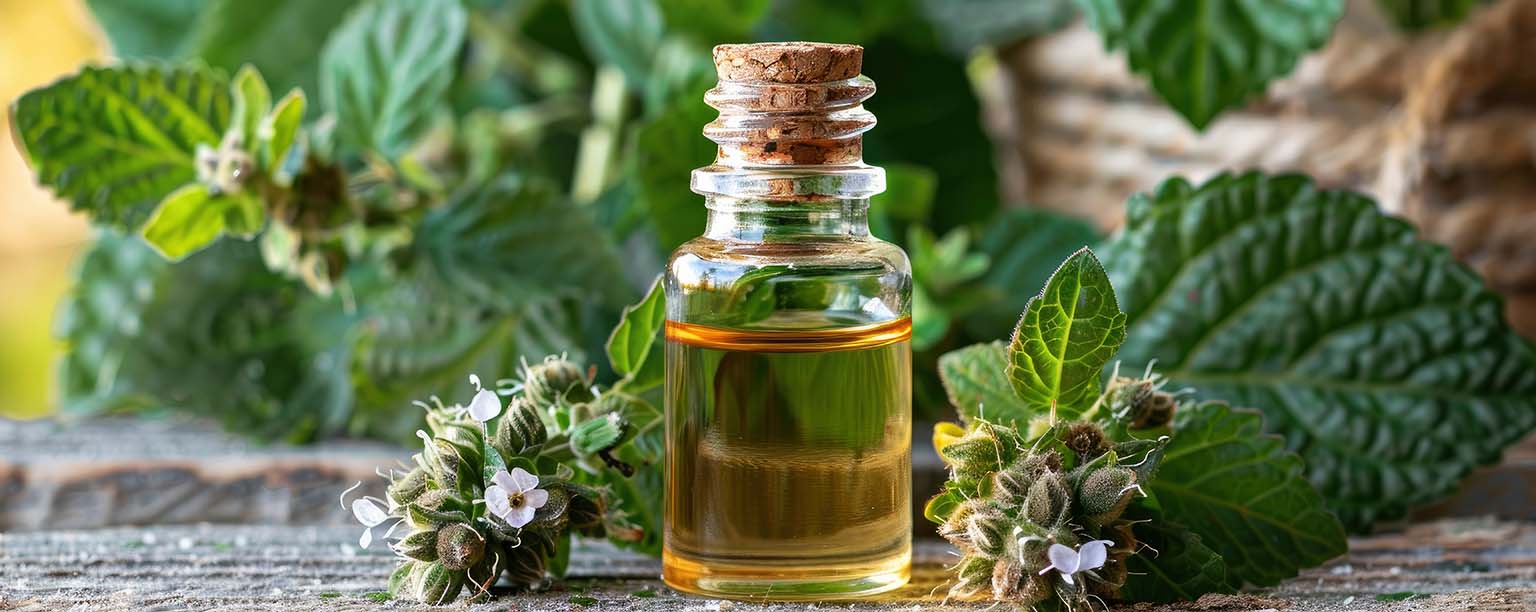Family: Lamiaceae
Scientific name: Pogostemon cablin
Common name: Patchouli
Native of: Tropical islands of southeast Asia
Greenhouse location: Room C
Family: Lamiaceae
Scientific name: Pogostemon cablin
Common name: Patchouli
Native of: Tropical islands of southeast Asia
Greenhouse location: Room C


Pogostemon cablin, commonly known as patchouli, has been cultivated in tropical southeast Asia for centuries and used for its essential oil.
Its sweet, pleasing fragrance has been described as musky, woody, and spicy.—making it a popular ingredient in perfumes, incense, candles, and cosmetics. The diluted oil can be used for aromatherapy. Although typically not the dominant scent, it is used widely to augment other fragrances in manufactured soaps, detergents, air fresheners, cosmetics, and perfumes.
Patchouli oil and incense surged in popularity in the United States and Europe during the hippie movement of the 1960s.
In addition to being used as a fragrance, P. cablin is used as an insect repellent. It is also used in alternative medicine. Early research suggests that it does have promising anti-inflammatory, antimicrobial, and pain-relieving properties.
The patchouli leaves are used to season foods or eaten as a vegetable in some cultures. An herbal tea can be made from the leaves.
The plant is a shrubby, perennial member of the mint family.
